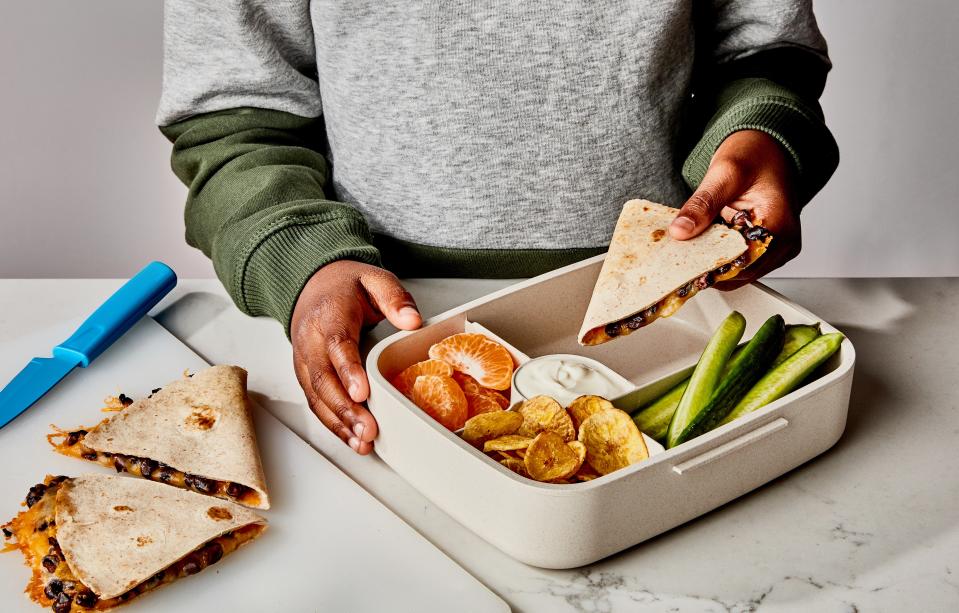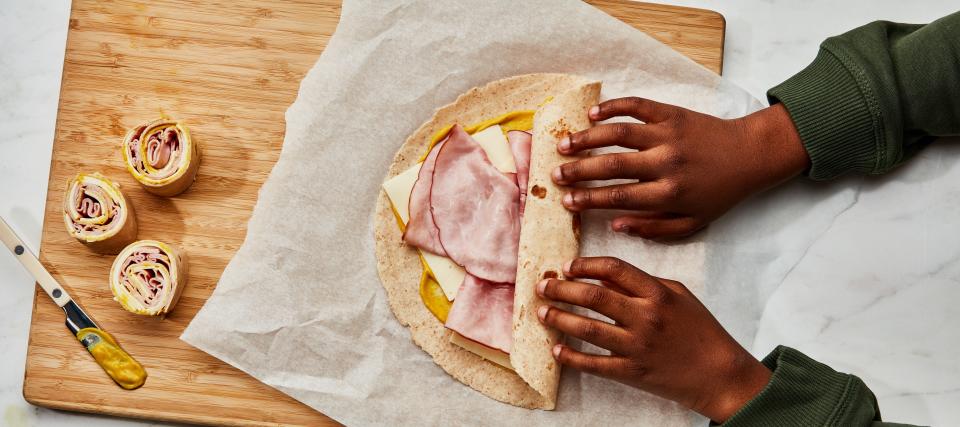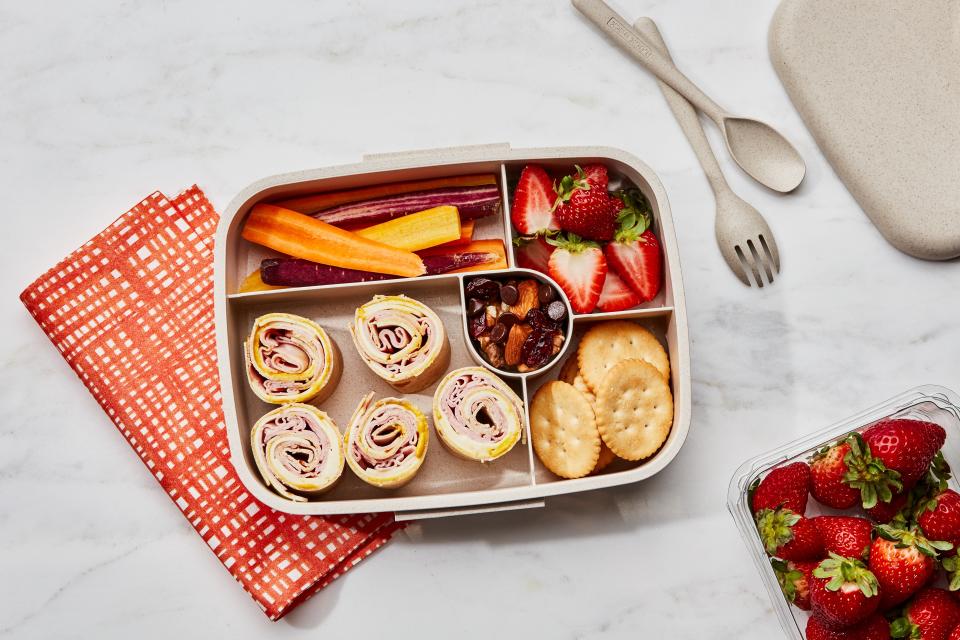Teach Your Kids to Make Their Own Lunch: Part Four
Small Plates is where Epicurious dishes on cooking for families and kids. This article is the fourth in a four-part series about teaching your kids to make their own lunch. Read Parts One, Two, and Three here.
Tired of spending time and energy putting together creative, healthy lunches only to see the food come home untouched? Handing lunch-making duties over to your kids might be the answer.
Nothing with kids is ever smooth sailing, so let’s talk problem-solving.
My chart worked for me and my son. He’s been packing his own lunches for four years now. But what works for my family won’t automatically work for yours, so I asked around: What’s stopping you from transferring lunch-packing duties to your kids? For the final entry in this series, I’m troubleshooting some of the responses I received. Here's what the parents I talked to said:
I struggle with this every week! Every week we decide she is going to start and then it’s always something. Plus, I can just do it faster.
I’m not gonna lie—this whole process requires a change in mindset. Instead of just thinking to yourself, this week we’re going to do it, make a step-by-step plan. You’ll have to invest some time to get yourself up and running, but once you do it won’t take much to maintain the routine. First, spend a few minutes talking to your child about how it’ll work, then draw up the chart. Give concrete examples. Does she like flour tortillas? Challenge her to think of different things that might go inside it, like ham and cheese pinwheels or a hummus and avocado wrap. Then make a shopping list together and hit the grocery store. At least one day before your child is supposed to pack her first lunch, prep the week’s ingredients together. All of this makes the actual packing of the lunch not just achievable but easy.

Get the Kids to Make Their Own Lunch tortilla 2
text in callout
We get stuck in ruts—three weeks of cheese, crackers, and cherry tomatoes, for example. I’d love a way to show her how to switch up flavor profiles or textures, even if she mostly just wants the same foods for weeks on end.
When it comes to school lunch, I say there’s nothing wrong with ruts. If it’s a relatively balanced meal and your kid eats it, you’re doing great! Heck, my husband has been eating hummus and baby carrots for lunch every day for years. But I hear you on the desire to change things up. Try a technique known as “scaffolding”—use your daughter’s comfort with what already works to expand her horizons. So instead of nudging her to go from from cheese, crackers, and cherry tomatoes to something else completely, suggest she try a different cheese a few times a week. When she’s good with that try changing the carb, then the vegetable. Once she’s embraced the idea of scaffolding, try using the cheese/carb/veg combo in a different way, like in a quesadilla.
Schools here are “balanced day,” so we have two separate lunches to pack.
I love this idea: Instead of kids sitting through two long periods of academics separated by lunch and recess, a balanced day spreads things out with three, shorter academic chunks that alternate with two brief meal breaks and recesses. Nutritionally, kids don’t need two full lunches each day, so it’s a question of packing a pair of hearty, substantial snacks that can be eaten quickly. Ideally each should have some protein, some whole-grain carbs, a fruit, and a vegetable, but as long as your kid packs all four categories at least once across the two lunches, you’ll be fine.

Get the Kids to Make Their Own Lunch tortilla
text in callout
My children are in California. In high school, they eat standing—outdoors—year-round.
This New Yorker is astounded at the idea of eating outdoors all year—but New Yorkers are known for eating on our feet, so the standing-up part adds an interesting twist. To me, this is an issue of packaging. Teach your child to put finger foods into easy-to-hold pouches instead of a bento box, or roll a turkey-and-Swiss wrap carefully in wax paper. Chopped salads in a container can be eaten with just a fork, and smoothies or yogurt-in-a-tube need no implements at all. And let’s not forget New Yorkers’ favorite on-the-go food: pizza. Consider this a good opportunity for your kids to learn how yummy cold pizza can be (or they can enclose a hot calzone in foil, and it’ll stay warm until lunch).

Get the Kids to Make Their Own Lunch tortilla 4
Photo by Chelsie Craig, Prop Styling by Beatrice Chastka, Food Styling by Dana Bonaguratext in callout
My 9 year old could probably handle the whole thing, but it would require me keeping after her about it, and honestly, it's less aggravating to do it myself. There's also the issue of what she would pack versus what I would pack.
I saved this one for last because it brings up the biggest issue: Relinquishing control. As parents, each of us has to choose our battles—and for you, the stress of getting your kid to pack lunch really might be worse than the stress of just doing it yourself. But if you’re reluctant because you’re concerned about what your kids will pack, try adjusting your thinking. No matter what’s in their lunchboxes, you can’t control what your children eat when they’re not with you. (As the mom of a super-picky eater, I know that you also can’t really control it while they are with you.) If you can accept that fact and make sure that the options you have on hand are nutritionally sound, there’s no reason your kids can’t choose what they want and pack it themselves. As with so much of parenting, it’s all about the guidelines.


